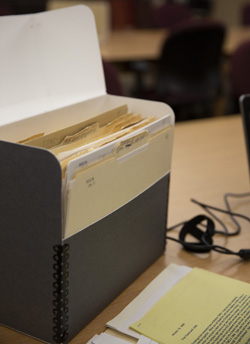
An archivist never knows what they will find as they begin opening boxes and folders in donated materials to arrange and describe a collection. And they don’t know what threads might appear that lead to other collections or lines of inquiry, or what gaps the new material might fill. For all they can’t anticipate, archivists can expect that there will be materials that will uncover or add to areas of interest for researchers. Sometimes new materials become their own puzzle to figure out — like who is the unidentified Western female in several of the photographs below? — while other times they provide the missing piece to a partially completed puzzle. A recent example of this is the photo album that Ruth Adeney donated to the Archives in 1997 along with the rest of the papers of her husband, David Adeney (CN 393), soon to be opened for researcher use.
Continue reading

